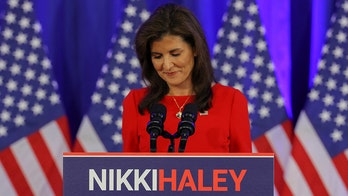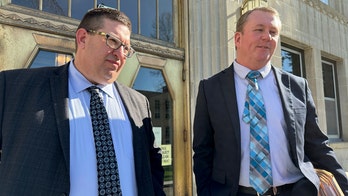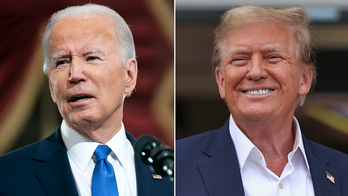The Sept. 11 attack in Benghazi targeted more than just a State Department consulate. One of the buildings hit was a covert CIA installation, U.S. officials told Fox News.
The now-abandoned American consulate in Benghazi was set a little more than a mile away from the CIA base. Up to this point, that separate base was described by administration officials only as a "safe house" or "annex" to the nearby consulate. In reality, CIA agents and other intelligence officials were operating out of Benghazi conducting delicate missions, including the search for over 20,000 deadly shoulder-fired missiles previously owned by Muammar Qaddafi's Libyan forces.
The work they conducted to seize those deadly weapons, known as MANPADS, was part of a broader and public effort by the State Department to secure them. The major concern is those weapons could be used to bring down a commercial jet.
These officials added that the number of CIA operatives in Benghazi clearly outnumbered that of the diplomatic staff. It took two military cargo aircraft to lift everyone out of Benghazi when the fighting was over.
Both the CIA outpost and the consulate were attacked on Sept. 11. Two of the men killed, Glen Doherty and Tyrone Woods, were hit by indirect fire while defending the intelligence post, not the consulate.
- Rep. Rogers calls latest Libya intel disclosures ‘orchestrated defense’ of administration
- Issa slams ‘false’ charge he outed names of Libyans who worked with US
- Fighting flares in Gadhafi stronghold for 5th day as army disperses protest with gunfire
- New details emerge of deadly attack on US Consulate in Libya
One witness told Fox News that Doherty and Woods were found on the roof of the intelligence base manning a single machine gun that was caked in blood, suggesting they continued firing after they were hit by a mortar round approximately seven hours after the attack began.
U.S. Ambassador Chris Stevens and information analyst Sean Smith were also killed in the attack hours earlier at the consulate.
In general, U.S. officials also say the consulate is better described as a diplomatic mission. It didn't carry out all the traditional roles of a consulate, such as issuing visas.
Revelations concerning just how sensitive operations were in Benghazi began to trickle out during the House oversight committee hearing two weeks ago with witnesses Charlene Lamb, a State Department official who heads diplomatic security, and Ambassador Patrick Kennedy, undersecretary for management at State. As part of their testimony, the two presented a map of Benghazi that clearly labeled and located the so-called annex. Rep. Jason Chaffetz, R-Utah, and committee Chairman Darrell Issa, R-Calif., both called a point of order, complaining that the map included information they were specifically instructed not to talk about.
More broadly, the heavy presence of intelligence operatives on the ground in Benghazi would suggest that facts about the attack would have been readily available. But the intelligence community has been criticized for failing to provide accurate information. Most notably, U.N. Ambassador Susan Rice has been accused of misleading the American public after she went on network television five days afterwards and claimed the attacks were spontaneous and motivated by an anti-Islam film.
Administration officials say Rice was speaking from the latest intelligence assessments, and weeks after her remarks Vice President Biden suggested the intelligence community was to blame for getting it wrong. "As they learned more facts about exactly what happened, they changed their assessment," Biden said during a recent vice presidential debate.
But now U.S. officials and the State Department seem to be hedging once again, saying the initial intelligence has yet to be proven wrong. On Friday, U.S. officials told Fox News "there is still intelligence suggesting this was an opportunistic act with limited preplanning, perhaps only over the course of a few hours." Meanwhile, State Department officials also told Fox News they haven't ruled out the film as a motivating factor.
In addition, press reports from Benghazi cite interviews with people in Libya who said the attackers suggested shortly after the attack that they "did it in retaliation for the video."





